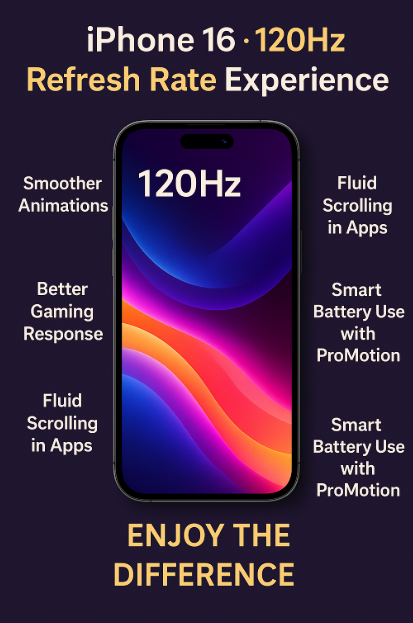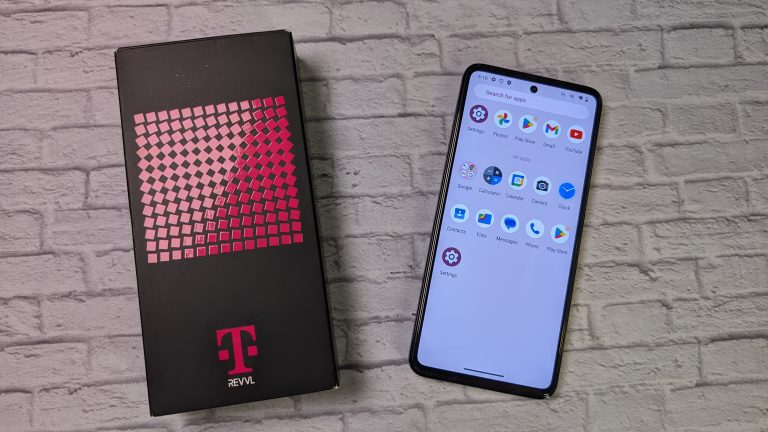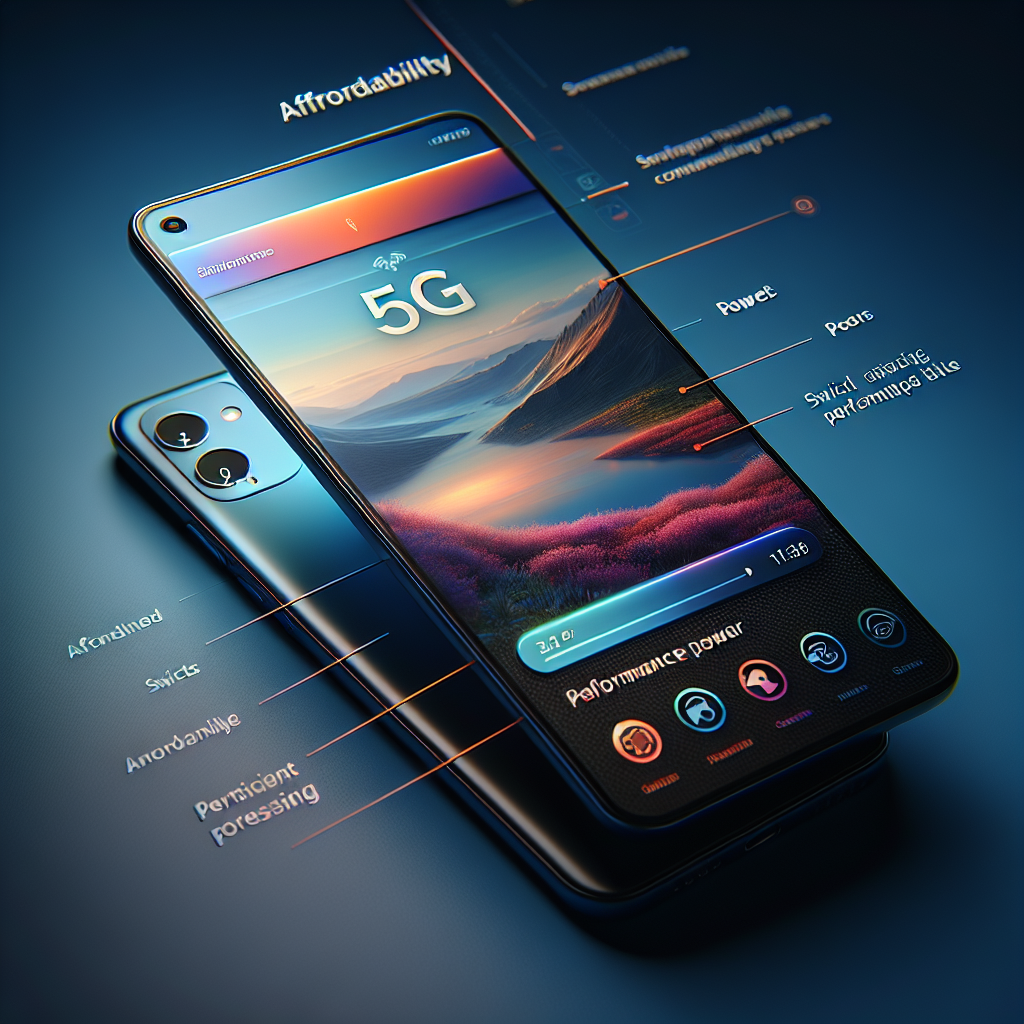Smartphone displays have evolved significantly over the past few years, and the latest advancement that has tech enthusiasts buzzing is the iPhone 16’s rumored 120Hz refresh rate. But what does that really mean for you?
Whether you’re an avid gamer, a content creator, or simply someone who values a visually smooth user experience, understanding the benefits of a high refresh rate can help you make an informed decision before upgrading your phone.
Let’s explore everything you need to know.
What Is a Refresh Rate and Why Should You Care?
The refresh rate is the number of times per second your screen updates its image. It’s measured in hertz (Hz). For example:
-
A 60Hz screen refreshes 60 times per second
-
A 120Hz screen refreshes 120 times per second
The higher the refresh rate, the smoother the motion appears this means less blur, better responsiveness, and a more premium experience.
The iPhone 16’s Rumored 120Hz ProMotion Display
Apple is reportedly upgrading the iPhone 16 with a ProMotion-enabled 120Hz display, similar to what’s already offered in iPad Pro and iPhone 15 Pro models. This will mark a major leap for standard iPhone users, as previous base models typically featured 60Hz panels.
The addition of 120Hz refresh rate on the iPhone 16 is expected to:
-
Improve responsiveness in apps and games
-
Provide smoother scrolling in web browsers and social feeds
-
Enhance the fluidity of animations across the system
Why a 120Hz Refresh Rate Improves Daily Use
Here’s how the upgrade will affect your experience:
Gaming Responsiveness
A 120Hz display delivers reduced input lag, sharper motion, and seamless action. Gamers will feel the difference immediately, especially in fast-paced environments.
Smoother Scrolling
Apps like Safari, Twitter, and Instagram feel more responsive with reduced stuttering giving a buttery-smooth swipe experience.

Less Eye Strain
Higher refresh rates can reduce the perception of flickering and help minimize fatigue during extended screen time.
Smart Battery Optimization
Apple’s ProMotion dynamically adjusts between 10Hz and 120Hz depending on the content. So even with a high refresh rate, you’ll still benefit from energy savings during static usage like reading or watching still content.
How It Compares to 60Hz Displays
-
Animations: Faster refresh rates allow transitions to feel almost instant
-
Touch Input: Reduced latency means the phone feels faster without needing a faster processor
-
Visual Clarity: Text and images remain sharper when scrolling
Once you experience 120Hz, going back to 60Hz can feel sluggish.
Complementary Features That Enhance iPhone 16’s Display
Here are other iPhone 16 features that synergize well with the 120Hz screen:
-
Widget Stack Management: Efficient UI interactions are smoother with faster refresh
-
Battery Drain Fixes: Combine high refresh with smart battery control
-
Stable Wi-Fi Usage: Ensure apps like FaceTime or streaming run fluidly
-
Flashlight Brightness Tweaks: Syncs well with display responsiveness
-
Fixes for Safari App Crashes: Faster rendering of pages feels more natural at 120Hz
Is 120Hz Right for You?
If you’re someone who:
-
Scrolls social media and web pages constantly
-
Games on your iPhone regularly
-
Enjoys premium UI animation and fast touch response
Then a 120Hz refresh rate will enhance your experience significantly.
However, if you mostly use your phone for static tasks (texts, email, calling), the difference may be less noticeable.
Conclusion: Worth the Hype? Absolutely.
With the iPhone 16’s 120Hz ProMotion display, Apple is set to offer a more fluid, responsive, and premium screen experience to a wider audience. From smoother scrolling and enhanced gaming to reduced eye strain and smarter energy usage, the benefits are clear.
Whether you’re upgrading from an older iPhone or simply curious about Apple’s display innovations, the 120Hz refresh rate might be the most noticeable change you didn’t know you needed until now.







